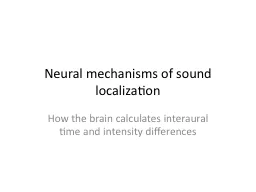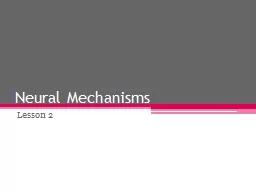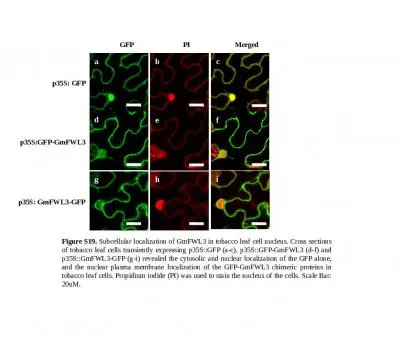PPT-Neural mechanisms of sound localization
Author : tatyana-admore | Published Date : 2015-11-02
How the brain calculates interaural time and intensity differences Bottom line Calculation of interaural differences in the brain depends on wiring and a balance
Presentation Embed Code
Download Presentation
Download Presentation The PPT/PDF document "Neural mechanisms of sound localization" is the property of its rightful owner. Permission is granted to download and print the materials on this website for personal, non-commercial use only, and to display it on your personal computer provided you do not modify the materials and that you retain all copyright notices contained in the materials. By downloading content from our website, you accept the terms of this agreement.
Neural mechanisms of sound localization: Transcript
Download Rules Of Document
"Neural mechanisms of sound localization"The content belongs to its owner. You may download and print it for personal use, without modification, and keep all copyright notices. By downloading, you agree to these terms.
Related Documents













